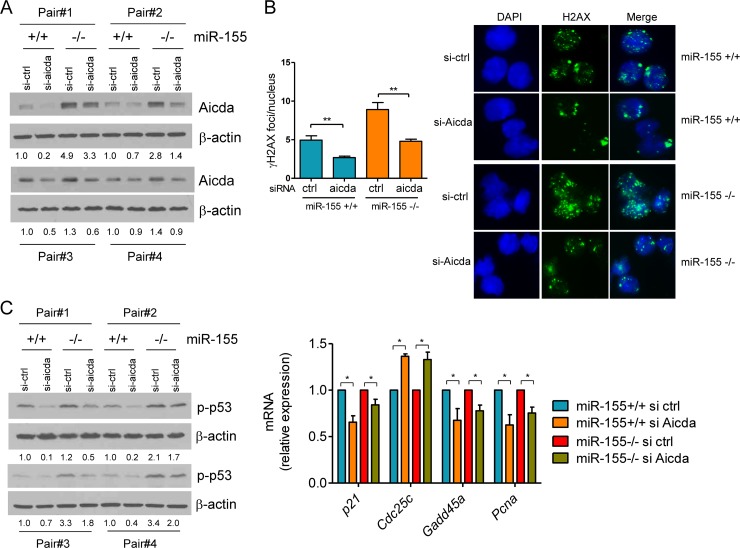FIG 5.
Aicda overexpression contributes to the excessive DSB and p53 activity in miR-155-deficient mature B cells. (A) Western blot analysis of mature B cells from miR-155 null or WT mice (four pairs of mice, n = 8) shows higher expression of Aicda in cells lacking the miRNA (for each pair of mice, compare si-ctrl in miR-155+/+ versus miR-155−/− mice). The display also demonstrates the effective downmodulation of Aicda by the siRNA-based strategy (compare si-ctrl to si-aicda lanes). (B) Quantification of γH2AX by IF demonstrates that downregulation of Aicda significantly limits DSB formation (**, P ≤ 0.01, two-tailed Student t test). Data shown are mean ± SD of γH2AX foci (50 nuclei scored/mouse) obtained from four pairs of miR-155+/+ and miR-155−/− littermates. A representative example of the γH2AX IF is also shown. (C) Left, Western blot analysis of p-p53 (Ser18) demonstrates its suppression following the knockdown of Aicda (displayed in panel A). Right, real-time RT-PCR quantification of p53 transcriptional targets confirms the significant suppression of p53 activity upon Aicda knockdown (*, P < 0.05, Student t test). Data shown are the mean ± SD from four independent assays (8 mice) performed in triplicate and are displayed as relative expression (si-ctrl versus si-Aicda). Densitometric quantification is shown below the Western blots (A and C); data are normalized by β-actin and displayed relative to the values found in miR-155+/+ B cells transfected with the si-ctrl oligonucleotides.

